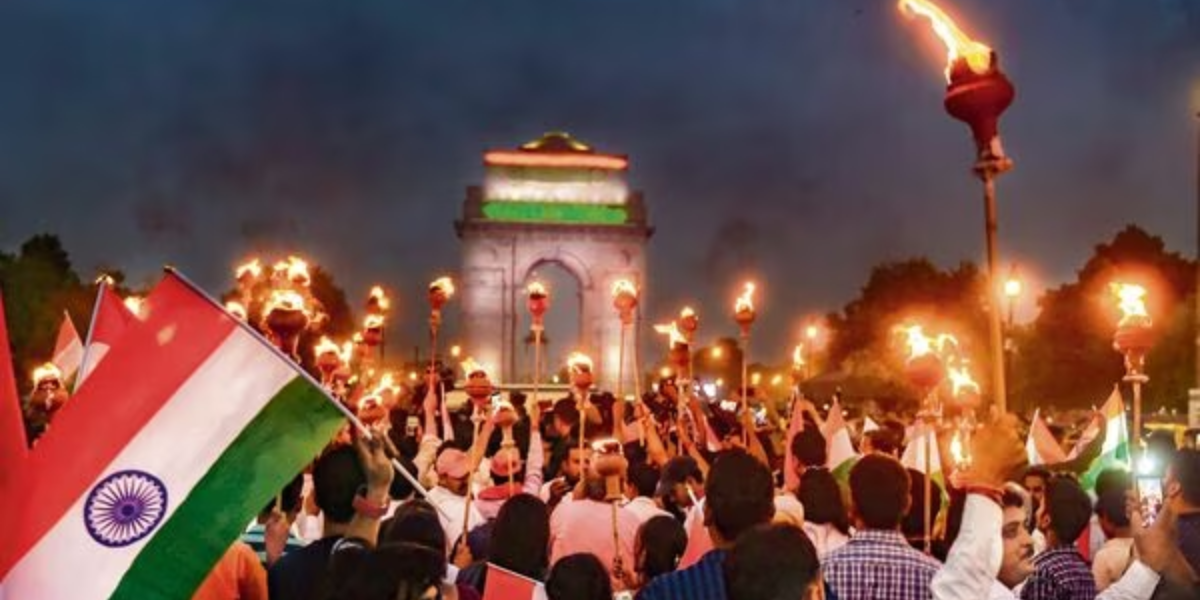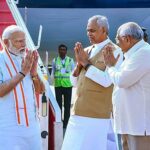At the same time when India is getting ready to see yet another dance of democracy during the 2024 Lok Sabha Elections, the poll bungle has been sounded. In the days leading up to elections that are extremely important, the deployment of deepfakes has become increasingly popular as a strategy for molding or swaying the attitudes of people. Despite the fact that the possible misuse of artificial intelligence (AI) in election campaigns raises concerns about the integrity of democratic processes, it also brings to life the influence that advancing technology has made on something as important as elections under a democratic government.
Does the creation of deepfakes by artificial intelligence remove even the tiniest bit of ‘choice’ from the voters of a nation?
Around the same time that voters in Telangana were waiting in line to cast their ballots on November 30, 2023, a video that went viral appeared on their Whatsapp discussions. A video that allegedly showed KT Rama Rao, who was serving as the incumbent Chief Minister at the time and was also the leader of the Bharat Rashtra Samiti (BRS), urging people to vote for the Congress to win the election.
Fake video was being shown.
In the elections for the Telangana Assembly, the Congress party emerged victorious, and Revanth Reddy was appointed as the next Chief Minister of the youngest state in India.
This flood of manipulated media that has damaged a number of elections in India’s states over the past several months is now threatening to fundamentally shape the next general elections in the country. The deliberately scheduled deployment of deepfakes was a marker of the flood of manipulated media that has been plaguing these elections.
According to a report by Al Jazeera, teams from all of India’s political parties, including the Bharatiya Janata Party (BJP), which is led by Prime Minister Narendra Modi, and the Congress, are using deepfakes in an effort to sway voters.
In recent months, the Dravida Munnetra Kazhagam (DMK), which rules Tamil Nadu, has utilized artificial intelligence to bring back to life its legendary leader M. Karunanidhi. This was accomplished by using recordings of the former movie writer and veteran politician attending campaign rallies that were extremely lifelike.
In the largest elections in the history of the globe, which will take place between March and May, over one billion voters in India will choose their representative for the next national administration. Let’s take a look at the ways in which political parties grab this technological marvel for their own benefit, as well as the reasons behind their doing so.

‘Manufacturing Consent’
Through the use of the propaganda model of communication, Noam Chomsky had pointed out in his magnum opus that the media, particularly in the United States, “are effective and powerful ideological institutions that carry out a system-supportive propaganda function, by reliance on market forces, internalized assumptions, and self-censorship, and without overt coercion.” Chomsky’s statement was made in reference to the fact that the media, particularly in the United States, fulfill this function.
Despite the fact that Chomsky’s book did not succeed in bringing artificial intelligence to the forefront, it is virtually impossible to discriminate between the two in light of the tremendous technological advancements that the world has witnessed.
Read More: https://www.aazkanews.in/in-400-seats-push-pm-modi-sets-80-80-target-for-up/
Deepfakes Used Since 2014
The BJP has been at the forefront of using illusions for campaigning. As far back as 2012, the party used 3D hologram projections of Modi so that he could simultaneously “campaign” in dozens of places at the same time. The strategy was deployed widely during the 2014 general elections that brought Modi to power.
In February 2020, Manoj Tiwari, a BJP MP, became among the world’s first to use deepfakes for campaigning. In three videos, Tiwari addressed voters in Delhi ahead of the capital’s legislative assembly elections in Hindi, Haryanvi and English – reaching three distinct audiences in the multicultural city. Only the Hindi video was authentic: The other two were deepfakes, where AI was used to generate his voice and words and alter his expressions and lip movement to make it almost impossible to detect, just on viewing, that they were not genuine.
Now, political observers have said that the 2024 elections could turbocharge the use of deepfakes even further.

Commoners in Election Campaign Deepfakes
The Indian Deepfaker is an artificial intelligence startup that is managed by Divyendra Singh Jadoun, who is thirty years old, according to a report by Al Jazeera. His company, which was established in October 2020, cloned the voice of Ashok Gehlot, the Congress contender for the position of chief ministerial candidate in Rajasthan state. This allowed his team to deliver personalized messages on WhatsApp, addressing each voter by their name, during the elections for the Rajasthan Assembly meeting in November.
During the election campaigns for the state legislatures of Madhya Pradesh in central India and Rajasthan in the west of India in November of last year, the police registered multiple cases for deepfake videos targeting senior politicians such as Modi, Shivraj Singh Chauhan, Kailash Vijayvargia (all of whom are members of the BJP), and Kamal Nath (Congress). In many cases, the production of deepfake content is contracted out to private consulting firms. These firms rely on social media networks for dissemination, with WhatsApp serving as the primary distribution platform.
How AI is Shaping Opinion of Voters?
“The use of artificial intelligence to manipulate voters is not being considered a sin by any party,” said a campaign manager who spoke with Al Jazeera. “They added that this is the case.” Simply said, it is a component of the overall campaign strategy.
The consultant, whose own candidate was targeted with one of these recordings, stated that AI-manipulated audios are particularly useful weapons in smaller constituencies. “Targeting candidates with forged call recordings about arranging ‘black money’ for elections or threatening someone to buy votes,” the consultant claimed. For the purpose of presenting the recordings as evidence of corruption, the candidates’ voices are typically masked on the recordings.
China is the only country that has more internet users than India, which has 760 million users, which is more than half of the population.
Read More: https://www.aazkanews.in/lok-sabha-elections-likely-after-march-13-election-commission-sources/








